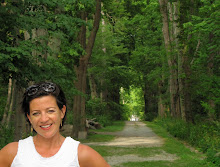In the spring the leaves emerge with a perfect chartreuse green hue. It is particularly noticeable when it brightens up a shady spot. In mid-summer, small pink flowers bloom along the stem.
 The summer flowers are nice enough, but the real show is in the fall, when a magenta-colored fruit forms where the flowers once were.
The summer flowers are nice enough, but the real show is in the fall, when a magenta-colored fruit forms where the flowers once were. The stems of new growth also turn magenta as the days become shorter.
The stems of new growth also turn magenta as the days become shorter. Personally, I think this is underused, though you can find it in spots of City Hall Park and Battery Park. There are two species: C. dichotoma (a native) and C. japonica. These photos are most likely of the non-native species, which has smaller leaves.
Personally, I think this is underused, though you can find it in spots of City Hall Park and Battery Park. There are two species: C. dichotoma (a native) and C. japonica. These photos are most likely of the non-native species, which has smaller leaves.Callicarpa is easy to break down in Latin. Calli- means beautiful and -carpa is derivative of fruit or body. A direct translation will more or less give you the common name, beautyberry.

No comments:
Post a Comment